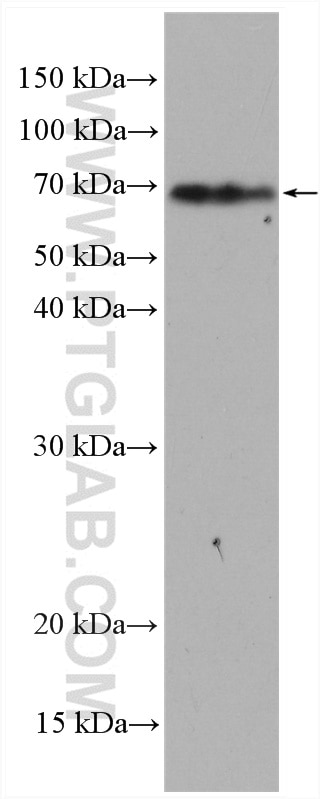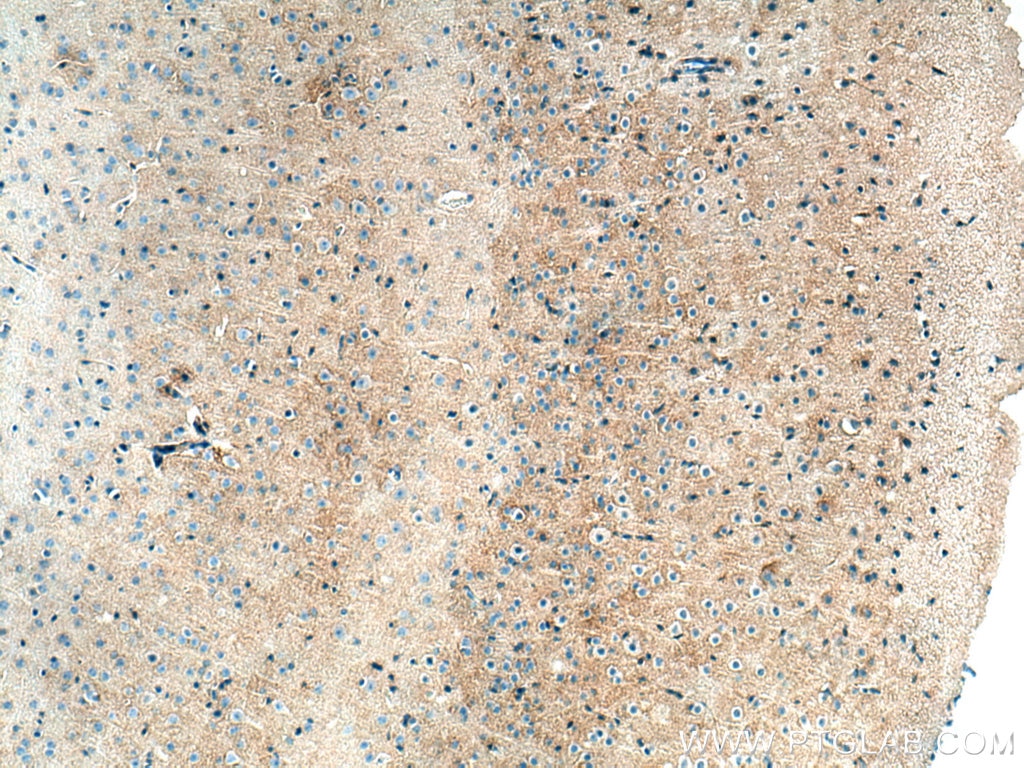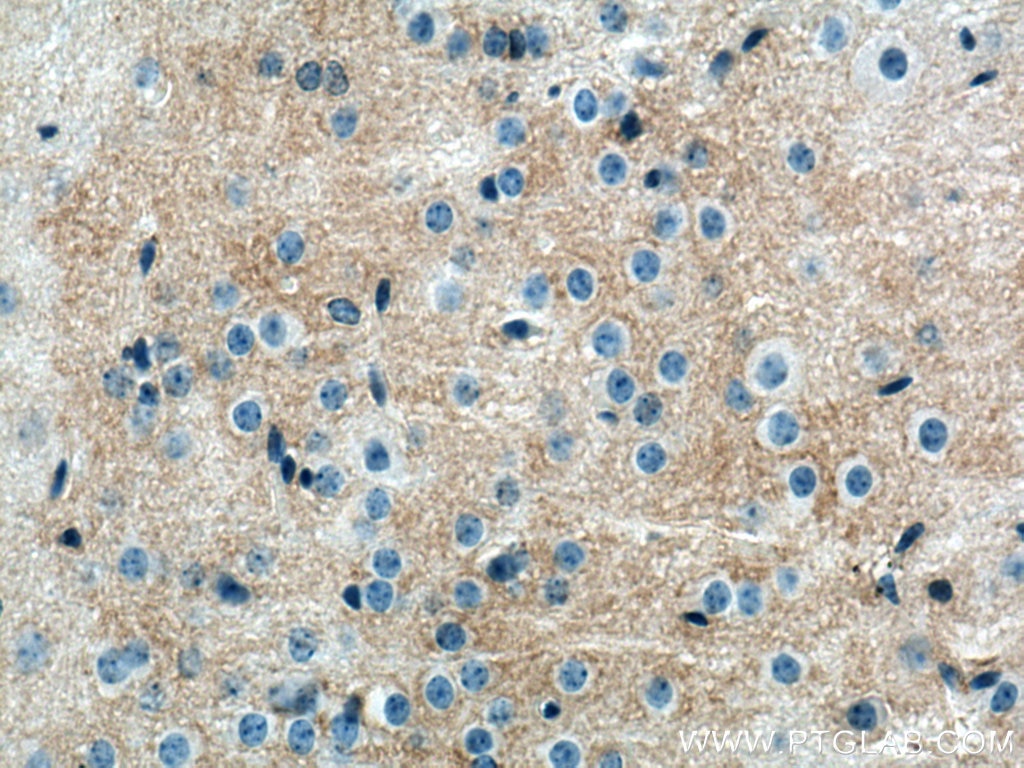Validation Data Gallery
Tested Applications
| Positive WB detected in | mouse cerebellum tissue |
| Positive IHC detected in | mouse brain tissue Note: suggested antigen retrieval with TE buffer pH 9.0; (*) Alternatively, antigen retrieval may be performed with citrate buffer pH 6.0 |
Recommended dilution
| Application | Dilution |
|---|---|
| Western Blot (WB) | WB : 1:500-1:1000 |
| Immunohistochemistry (IHC) | IHC : 1:200-1:800 |
| It is recommended that this reagent should be titrated in each testing system to obtain optimal results. | |
| Sample-dependent, Check data in validation data gallery. | |
Published Applications
| WB | See 2 publications below |
| IF | See 1 publications below |
Product Information
13920-1-AP targets SLC6A11 in WB, IF, IHC, ELISA applications and shows reactivity with human, mouse samples.
| Tested Reactivity | human, mouse |
| Cited Reactivity | mouse |
| Host / Isotype | Rabbit / IgG |
| Class | Polyclonal |
| Type | Antibody |
| Immunogen |
CatNo: Ag4927 Product name: Recombinant human SLC6A11 protein Source: e coli.-derived, PGEX-4T Tag: GST Domain: 1-208 aa of BC036083 Sequence: MTAEKALPLGNGKAAEEARESEAPGGGCSSGGAAPARHPRVKRDKAVHERGHWNNKVEFVLSVAGEIIGLGNVWRFPYLCYKNGGGAFLIPYVVFFICCGIPVFFLETALGQFTSEGGITCWRKVCPLFEGIGYATQVIEAHLNVYYIIILAWAIFYLSNCFTTELPWATCGHEWNTENCVEFQKLNVSNYSHVSLQNATSPVMEFWE 相同性解析による交差性が予測される生物種 |
| Full Name | solute carrier family 6 (neurotransmitter transporter, GABA), member 11 |
| Calculated molecular weight | 71 and 23 kDa |
| Observed molecular weight | 65-70 kDa |
| GenBank accession number | BC036083 |
| Gene Symbol | SLC6A11 |
| Gene ID (NCBI) | 6538 |
| RRID | AB_2877988 |
| Conjugate | Unconjugated |
| Form | |
| Form | Liquid |
| Purification Method | Antigen affinity purification |
| UNIPROT ID | P48066 |
| Storage Buffer | PBS with 0.02% sodium azide and 50% glycerol{{ptg:BufferTemp}}7.3 |
| Storage Conditions | Store at -20°C. Stable for one year after shipment. Aliquoting is unnecessary for -20oC storage. |
Protocols
| Product Specific Protocols | |
|---|---|
| IHC protocol for SLC6A11 antibody 13920-1-AP | Download protocol |
| WB protocol for SLC6A11 antibody 13920-1-AP | Download protocol |
| Standard Protocols | |
|---|---|
| Click here to view our Standard Protocols |
Publications
| Species | Application | Title |
|---|---|---|
J Neurochem Cooperative and competitive regulation of the astrocytic transcriptome by neurons and endothelial cells: Impact on astrocyte maturation | ||
Ecotoxicol Environ Saf 1,2-Dichloroethane causes anxiety and cognitive dysfunction in mice by disturbing GABA metabolism and inhibiting the cAMP-PKA-CREB signaling pathway | ||
Neuropharmacology A role of GABAA receptor α1 subunit in the hippocampus for rapid-acting antidepressant-like effects of ketamine |



